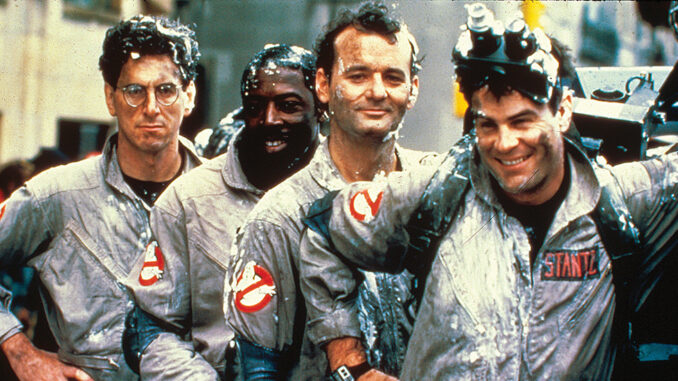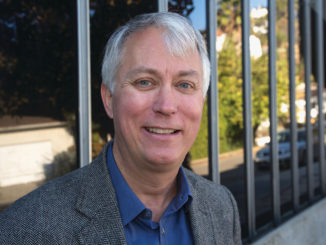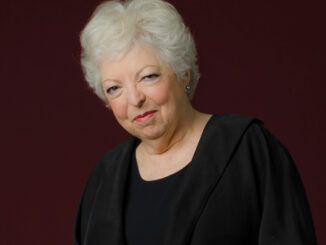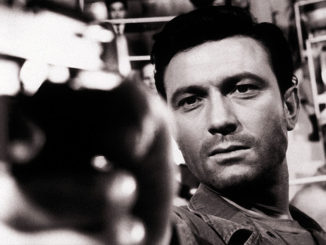
by Jeff Cenkner
As far back as I can remember, I always wanted to be a Ghostbuster. For a kid growing up in the suburbs of Detroit, enduring frigid, snowy winters, there was a certain level of comfort to be found in the warm glow of Saturday morning television. The animated choices in those days were vast, but there was one show in particular that succeeded in keeping me glued to the living room floor: The Real Ghostbusters.
That cartoon, along with a barrage of related must-have merchandise (action figures, goopy slime, books, lunch boxes) was immensely popular with kids my age. One year, I had a Ghostbusters-themed birthday party, complete with matching cake, napkins and plates. Another year, I went as a Ghostbuster for Halloween, wearing a store-bought authentic jumpsuit and plastic “proton pack.” And yet somehow, despite this obsession, I had missed out on the fact that Ghostbusters was also a live-action film from Columbia Pictures!
One fateful day, at a friend’s house, a well-worn VHS copy was revealed to me. The brilliant, yet minimalist imagery on the box — the red “no ghosts” logo, bold white-lettered title and black background — remains permanently burned into my brain like a ghostly watermark on a plasma screen. We popped the pan and scan tape into the deck, and I sat riveted, watching Dan Aykroyd, Harold Ramis and Bill Murray bring to life the characters I had only known as silly animated drawings. This was the real Ghostbusters, and it wasn’t just for kids. I was only six years old, but the film struck me like nothing else.
The story follows three scientists recently kicked out of Columbia University who decide to turn their questionable academic studies of the supernatural into a for-profit business. After a rocky start, they land their first capture job, hilariously trashing an upscale ballroom at a posh Manhattan hotel. After that, business booms. Meanwhile, Dana Barrett (Sigourney Weaver) discovers a portal to another dimension in her refrigerator, signaling the coming of Gozer, an ancient Sumerian god bent on the total destruction of New York City. Add in a decked-out ‘59 Cadillac hero car, people turning into possessed demon dogs, and a giant Marshmallow Man terrorizing Manhattan à la King Kong… It sounds absolutely preposterous — but somehow it all works.
While it was strikingly original back in 1984, Ghostbusters remains endlessly re-watchable to this day. A major part of this is due to Ivan Reitman’s direction and the stellar cast. And now that I’m working in editing, I’ve really come to respect the amazing work of David Blewitt, ACE, and Sheldon Kahn, ACE, for crafting a film so well-balanced in its pacing, comedic timing and thrills. There’s never a dull moment, and the story progression feels just right. There’s also the fun, bombastic score by Elmer Bernstein, adding style and personality in the best musical sense. The majority of the visual effects shots, filmed in 65mm for compositing purposes, still hold up well today.
The city of New York plays a critical role in setting the overall tone, becoming a character in and of itself. Locations such as the New York Public Library, Columbus Circle and Central Park add a strong sense of identifiable place and help keep the fantasy aspects of the film grounded. This New York was a far cry from the dark, gritty hellhole depicted in dramas from the early 1970s on. There’s a prevailing sense of optimism as the Ghostbusters become local heroes, fighting to save their hometown. When I had the opportunity to spend a week in New York last year, my visit wasn’t complete without seeing many of these landmarks, including the actual firehouse exterior used in the film. Ghostbusters simply isn’t Ghostbusters without New York.
My early enthusiasm for the film helped ignite my budding interest in visual storytelling, and quickly became a creative outlet. At age seven, I was inspired to put together a 120-page illustrated adaptation of the story. A couple years later, I adapted the 1989 sequel and continued the franchise with my own “Ghostbusters III.” Looking back at those books now, with rough stick figures and crayon highlights, they seem pretty crude. However, I can’t help but think that making those gave me an early sense of story structure and scene summarization — both useful traits in editing.
I’ve probably watched Ghostbusters an average of twice per year since first seeing it in 1988. To me, it’s the gold standard of how to properly cut and pace an action comedy. And it’s one of the reasons I decided to move to Los Angeles and pursue a career in film/TV. That inspiration is what drives me in my own work. I can only hope that in my career I can be involved with projects that have that same lasting impact with the power to inspire a new generation of storytellers. And it never hurts to make ’em laugh, either.




